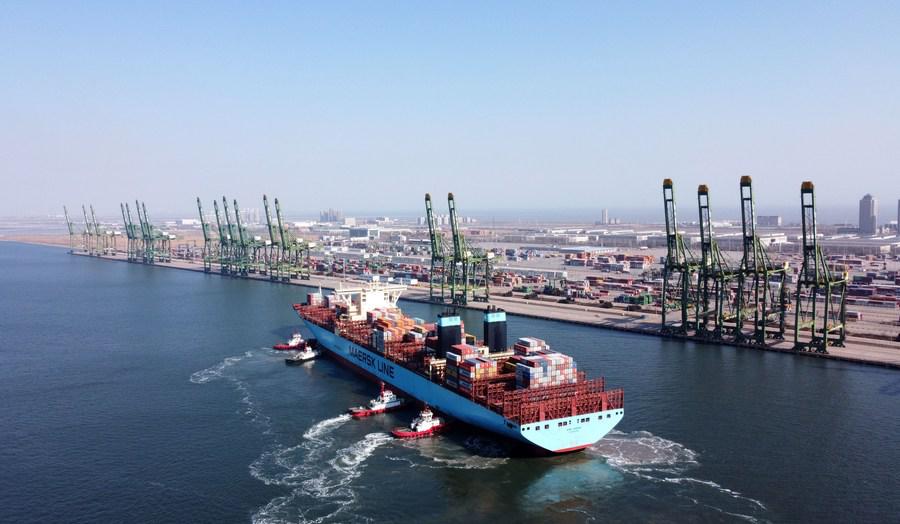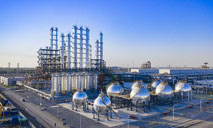Harbor operators escort vessels with winds of change

Aerial photo shows a container vessel sailing into Tianjin Port in north China's Tianjin Municipality, Feb. 22, 2021. (Xinhua/Zhao Zishuo)
TIANJIN, July 12 (Xinhua) -- On a giant screen, vessels sailing in and out Tianjin Port, China's major coastal port in Tianjin Municipality, became small yellow dots via radar devices and various sensors, with which the identification and accurate locations of the vessels can be easily confirmed.
Sitting in front of the screen and holding a Very High Frequency (VHF) telephony, harbor operators in the Vessel Traffic Services (VTS) Center of Tianjin Maritime Safety Administration could direct the port traffic in real-time and communicate with the sailors in fluent nautical language.
"Based on the VTS system, we can also predict the sailing lines in port for each vessel in the following 24 hours to optimize traffic efficiency," said Ren Honghai, chief operator of Tianjin VTS Center, who served as a captain before.
Having been working with the sea for most of his life, Ren witnessed the great development of Tianjin Port.
The technological equipment in the port was backward when the center was put into use in 1997. Operators could only use old-fashioned radars, ocean maps, telescopes to roughly locate vessels' positions at that time.
"In the 1990s when there were only a few ships, operators could write down all the sailing plans of a day on a small blackboard," said Ye Hailong, Ren's colleague.
Ren, a former crew member, had to report the latitude and longitude of the ship to the operators through VHF telephony.
"Restricted by technological conditions and limited technical personnel, the instructions given by operators were relatively lagging, and ships had to stay at anchorage for several hours after arriving at the port from time to time," Ren said.

Aerial photo taken on Jan. 17, 2021 shows a smart container terminal at Tianjin Port in north China's Tianjin Municipality. (Xinhua/Zhao Zishuo)
Ushering in the 21st century, Tianjin Port began to flourish with economic development and increased shipping demand. The center has gradually advanced technical equipment, improved the VTS system and strengthened standardized training of operators.
A decade later, Ren sailed into the Tianjin Port again, stunned by the great changes. "As soon as the ship sailed into the port, a clear and sonorous voice from an operator, using standard nautical language, could be heard. After berthing, the customs clearance procedures were also quick and convenient," Ren said.
Ren became a harbor operator in 2010, since then, he, along with his colleagues, has been optimizing the sailing routes and has helped save nearly three hours of waiting time for each vessel on average.
"While improving the availability of the channel, the VTS system also increases the utilization rate of the berth and the turnover rate of the port," Ren said.
Currently, Tianjin port has trade ties with more than 800 ports in over 200 countries and regions. Despite the COVID-19 pandemic-induced impacts, the port handled 18.35 million Twenty-foot Equivalent Units (TEUs) in 2020, up 6.1 percent from the previous year, ranking among the top 10 in the world.
"When I was a captain, I felt at ease when I heard the voice of operators. I hope I can bring the same sense of security to the crew members nowadays," Ren said.
Photos
Related Stories
Copyright © 2021 People's Daily Online. All Rights Reserved.










